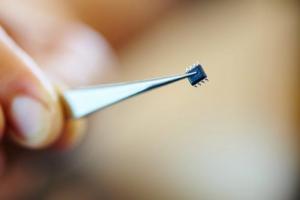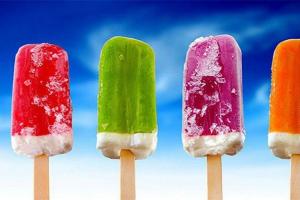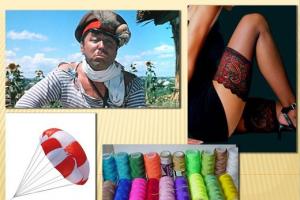A DIY volcano is good entertainment for both adults and children. The main thing in business is not to be shy about using your imagination. The volcano can be made from foam plastic, papier-mâché, plasticine, earth or clay. It is very important to give the similarity to the real territory on which the volcano is located. This can be done by adding small parts: different animals running away from danger, miniature copies people, trees, bushes, grass. It is necessary to breathe life into the overall picture, which will undoubtedly refresh the process of magma eruption. By adding dyes to the soda, the lava coming out of the crater will be much more spectacular.
How to make a volcano at home from polystyrene foam
In order to make a beautiful erupting volcano at home, in addition to ingenuity, you will need desire and some materials.
Materials for work
- Large glass bottle – 1 piece.
- Foam white, density No. 25. Dimensions: 35 cm height, 40 cm width, 40 cm length.
- Glue “Dragon”.
- Primer ST-16.
- The brush is wide.
- Sandpaper of different grains.
- Starting putty.
- Small rubber spatula.
- Primer for putty.
- Layout with a new blade.
- Water-based paints.
- Water-soluble varnish.
- Paint brushes are wide and narrow.
- Fiberboard – size 60 cm by 60 cm.
- Plasticine of different colors.
The working process
- A piece of polystyrene foam must be carefully divided into two halves -17.5 cm/20 cm/20 cm. It can be cut with a metal saw so as not to seriously injure the surface.
- After the foam is divided into two parts, you need to cut out the middle of the foam into which the glass bottle will fit. The neck of the bottle should be hidden under the top point of the foam. After the bottle is placed in polystyrene foam, the halves are glued together with “Dragon” glue. The bottle should come out through the bottom of the makeshift volcano.
- Further breadboard excess pieces of foam are cut off from the outside in order to give the shape of the volcano.
- After the foam has already become like a volcano, you can become cowardly fine foam fraction and start sanding surfaces with sandpaper. First large, then smaller.
- It was time to prime the surface (2 layers). Each layer is applied after the previous one has dried. The layers will prevent the putty from crumbling.
- The finished putty is applied with a spatula. The next layer is laid after the previous one has dried. The putty should not crack; the thicker the layer, the more likely the presence of cracks. When using flexible putty, the surface will be more resistant to movement.
- If all layers of putty have dried, the surface is sanded with medium and fine sandpaper. This is done in such a way as not to remove curves and waves. The volcano should still look like a volcano.
- A primer is applied with a brush to strengthen the putty (several layers).
- Now you can prepare the paints that will be used to paint the surface of the volcano. Color scheme, for example, blue and green, lilac and orange.
- The paint is water-based for quick drying. Gouache is also used.
- When the volcano is painted, varnish is applied. Now the surface is glossy and shimmers pleasantly. Instead of water-soluble varnish, the product is varnished alkyd varnish. The surface will be stronger and reusable.
- A fiberboard platform for the volcano is being prepared. The area around the active volcano is inhabited by hand-made plasticine animals. Trees are planted, real or plasticine stones are placed.
- Now you can start activating your homemade volcanic creation.


How to make a volcano at home - lava
The following materials are used for lava:
- bicarbonate of soda - 4 tablespoons;
- vinegar - 1 glass;
- red dye.
Cooking process:
- Through the funnel in glass bottle soda and dye are added to give color.
- The bottle is placed through the bottom into the center of the volcano.
- The volcano is installed on the site.
- The next step will be launch. Vinegar is poured through a funnel. An eruption is happening!


The volcano model is made as big as your imagination can allow. A volcano can be low or high, and the area in which it is located is not necessarily square in shape. For example, using construction tools Easily molded into a circle shape. A variety of colors are selected. If desired, it is very easy to make an impressive background from fiberboard, which depicts a sunset, birds flying away in panic, or even pteranodons.
Hello, dear readers! It's no secret that all children love the mysterious, beautiful and magical. Probably, your children also like everything fabulous and interesting? Wouldn't you like to play the role of a wizard for your baby? Surprise him with unusual phenomena, make a lasting impression?
I bring to your attention the experiments at home that we conduct with children. Today I will tell you about the Vulcan experience for children- this is an amazing, mesmerizing spectacle, children watch the volcanic eruption with interest, I recommend trying it. Your baby will definitely appreciate it!
In addition to this experiment, the kids and I conducted several more: an experiment with milk (you can watch) and an experiment with water (see), which I think your child will also appreciate!
- Cardboard
- Plasticine
- Jar (I took it from baby puree)
- Plate or tray
- Stapler
- Scissors
- Dishwashing liquid 1 tbsp.
- Soda 1 tbsp.
- Acetic acid
- Thinned paint
Making preparations for the Vulcan experiment

Experience at home Vulcan
Now I will tell you in detail how to do the volcano experience. By the way, during the experiment, the children took an active part - they covered a paper cone with plasticine, poured soda into a jar, poured detergent, colored the water with paints, after which the resulting colored solution was poured into the jar. The only thing I did myself was to cut out a cone, fasten it with a stapler and pour vinegar into the mouth of the volcano, after which the eruption began. So, let's proceed directly to the experiment.

What experiments have you done with kids - preschoolers or maybe with older children, please share in the comments, it’s very interesting to know
You can watch a volcano erupt at home not only on TV. With the help of a small chemical experiment, you will arrange a real eruption on a fairy-tale island.
From this article you will learn
All that is needed
You will need a little experience household chemicals And decorative elements to create an island. An island with a volcano can be made from natural materials or use dinosaur sensory box sets.
A model of a volcano is made from plasticine. Creating a fabulous volcanic island for the experience is the main component of it and serves to develop the child's imagination and creativity. Such activities will help instill a love for chemistry and geography. fine motor skills fingers, the child will develop while making plasticine terrain and its inhabitants.
To make an island you need:
- cardboard;
- stapler or narrow tape;
- box with colored plasticine;
- small animal toys;
- colorful pebbles;
- a large plastic box or bowl in which the island will stand;
- glass or plastic container with a volume of 200 ml for the volcano crater.
To conduct the experiment you will need:
- soda 20 g;
- food coloring:
- vinegar 9%;
- dish detergent 25 ml;
- water 100 ml.
Usually the experiment continues until mom runs out of all the baking soda and vinegar, so be patient.
Children cannot carry out the experiment on their own without adults. If vinegar gets into a child's eyes or mouth, it can cause a burn to the mucous membranes, and if swallowed, it can cause a burn to the esophagus.
Making a fairytale island

You can build an island in a large plastic container. Pour real water and line the bottom with round pebbles. Make a container for the volcano from a jar for baby food or an old glass. For the mountain inside which the container will stand, you need to make a cardboard model; your child will be happy to cover it with plasticine.
The sequence of making a volcanic mountain:
- cut out a circle of the required diameter from thick cardboard;
- make a cut from the edge to the center of the circle;
- roll up a cone;
- the edges of the cone are fastened with a stapler or tape;
- cut off the upper part of the cone at a height equal to the container chosen for the volcano;
- place the container inside the cone.

I coat the top of the mountain with plasticine. To do this, roll out small plasticine cakes. Brown and stick to a paper cone, completely covering the cardboard. The top of the volcano can be made of red plasticine, which will imitate hot lava.
They place a volcanic mountain on a dry island of pebbles. They are seated around small rubber animals that are among children's toys. Multi-colored amazing dinosaurs or wolves, foxes, bunnies, bears and other inhabitants of the forest and jungle. Depending on what animals were planted, vegetation for the island is selected. Large tree ferns and horsetails for dinosaurs, and ordinary fir trees and birches for bunnies and foxes.
Plastic plants are also often sold in sets for children's games. You can use a leaf of a living fern and twigs of plants if it is summer outside. Plants can also be molded from plasticine, made from threads and beads or ordinary cardboard.
Can be made from cardboard small houses, for plastic Indians and soldiers. It is better to use cardboard to make plants and houses when the island is in a container with blue-dyed sand instead of water or on a blue plasticine sea.
Conducting an experiment
Finally the island is ready. All the toy animals and people froze in anticipation interesting event– volcanic eruptions. They know that the volcano is not real and therefore are not afraid of it.
To conduct the experiment, pour a tablespoon of soda into the volcano jar. Add a tablespoon of dishwashing detergent. Food coloring red or orange color dissolve in 100 milligrams of water and add to soda and detergent. The base for the experiment is ready, all that remains is to add vinegar. For mom, you can let your child pour vinegar into the volcano on his own, under her supervision, so that he doesn’t do it in her absence. It is better to repeat the experiment for an encore, pouring vinegar into the “mouth” of the volcano and pouring soda into it until the child is interested in it and asks to repeat the experiment.
When vinegar is added, the baking soda will begin to foam, erupting from the “volcano mouth” like red or orange lava. Detergent will allow the “lava” to foam longer and more abundantly, overflowing from the vent and flooding the surroundings along with plants and animals that, through carelessness, settled too close.
Afterword
The safest way to experiment with a volcano for young children is to use baking soda and vinegar. It can be repeated many times, and get necessary materials experience will not be difficult.
The most interesting thing about the experience is creating your own fairy-tale island with your child, which can be used not only for the “Volcano” chemical experiment, but also for an exciting game.
With older children, you can conduct the “Vulcan” experiment at home using  , potassium permanganate and glycerin. For the experiment, ammonium dichromate is poured into an evaporation bowl in the form of a slide, in the middle of which a depression is made. Add a little potassium permanganate and a few drops of glycerin to the recess.
, potassium permanganate and glycerin. For the experiment, ammonium dichromate is poured into an evaporation bowl in the form of a slide, in the middle of which a depression is made. Add a little potassium permanganate and a few drops of glycerin to the recess.
After a few minutes, due to the interaction of potassium permanganate and glycerin, the ammonium dichromate will ignite. Sparks will shoot out from the volcano in all directions, and a fountain of fire will begin to erupt. Before starting the experiment, the bowl must be placed on foil so as not to burn the surface on which the experiment will take place.
Ammonium dichromate can simply be set on fire, and it will burn like a volcano, spewing sparks. The experience is exciting, but children should not be allowed to do it without the presence of adults. Burns can be caused not only by sparks, but also by the chemicals used.
Good luck with your experiments!
With an active volcano. The craft is made entirely from waste material.
One of the most interesting elements in the world of dinosaurs - a volcano. It’s real, Anya really likes it when we launch it. True, she hides the dinosaurs in caves in advance so that they do not die.
And today I want to tell you how to make a home volcano. By the way, the volcano is interesting not only from the point of view of play, but also from the point of view of child development. When you launch a volcano, you spend a small chemical experiment showing your child how baking soda and vinegar can interact together. You can tell an older child that the bubbles that are released are carbon dioxide.
First, I'll tell you how to make a reusable volcano that can be launched repeatedly. It will take some time to create it. At the end of the article I’ll tell you about one more thing - fast way creating a home volcano.
To create a volcano you will need:
- plastic bottle 1.5 l.;
- a plastic lid (for example, from sour cream, mayonnaise, or from a regular plastic disposable round jar);
- masking and regular tape;
- gypsum plaster (or salt dough);
- acrylic paint (or a mixture of gouache and PVA);
- base for the volcano (we use a plastic cookie base);
- paper or old newspapers;
- foil.
1. Cut plastic bottle desired height, set it to plastic cover and secure with tape.
You will have a solid base for the volcano.
2. Attach the future volcano to the plastic backing using tape. You can also use a piece of plywood as a base.
3. Shape the bottle into a cone.
To do this, we tore off small pieces of paper, crumpled them and laid them around the volcano and secured them with masking tape, gradually moving up. To prevent the paper from getting wet from the plaster, cover it with foil (we also secure the foil with masking tape).
4. Thin the gypsum plaster to the consistency of very thick homemade sour cream and cover the volcano with it. Try to give relief to the volcano: make something like grooves through which lava flowed and ledges.

Instead of gypsum plaster can be used - just cover the base of the volcano with it, giving the desired relief.
As an option, you can cover the volcano with paper soaked in glue using the papier-mâché technique.
5. Wait for the volcano to dry and paint it. Use different shades brown paint. Use red paint to paint traces of lava.

The volcano is ready!
For a volcanic eruption you will need:
- a teaspoon of soda;
- a drop of dishwashing detergent;
- red paint or red food coloring;
Let's get to the fun part! Inside the crater of the volcano, place a teaspoon of soda, add red food coloring or red gouache (we used gouache), add a drop of dishwashing detergent. You can pour a little water, but we did without it.
Carefully pour table vinegar into the crater of the volcano and the eruption begins!

Dishwashing liquid does chemical reaction more active - a lot of beautiful red foam (lava) is obtained.
And as promised, a simpler option for creating a volcano.
How to make a volcano from paper and plasticine
Roll a sheet of cardboard into a cone shape and cut off the top. This will be the shape for your home volcano. Cover it with plasticine on top so that the cardboard looks like a mountain. It is better to place the volcano on a plate or baking sheet so that nothing gets dirty during the eruption.
Place a jar (for example, baby food or soap bubbles) inside the cone. First put the lava mixture (soda, paint, food coloring) into the jar.
That's it, the volcano is ready. This volcano is very quick to make; it is convenient when you want to show your child a real volcanic eruption right now.
We took the second option for creating a volcano from the book "".
Now you know how to make a volcano. You can conduct experiments!
Children are constantly interested in everything new. They are interested in the world, the structure of nature. They dream of seeing a tsunami, earthquake or volcanic eruption. They wonder where the mountains came from and why trees grow. You can’t explain or show everything, but you can offer your child an interesting activity together - making a homemade volcano with your own hands.
We bring to your attention several ways to create simple layouts. Any student can complete this project for a geography lesson independently. Younger kids will need your help, you can turn the construction of a volcano into a real one exciting game. It will be useful for preschoolers to take part in creating the layout. They will be able to learn how to work with plasticine, papier-mâché, plaster and any other materials that you choose to bring your project to life.
Before starting work, it will be interesting and useful for children to learn what a volcano is and what parts it consists of.
Volcano - mountainous formation, which appeared naturally above faults in the earth’s crust, through which lava comes to the surface. Lava is magma that has come to the surface and has gotten rid of its gases. Magma is the liquid, burning component of the earth's crust.
A volcano is most often represented as a high mountain, from the mouth of which steam pours out and lava bursts out. This is not entirely true, it can not only have the shape of a mountain, but also be very low, like a geyser or a small hill.
Pay attention to the cross-sectional diagram of the volcano. Hot magma rises through the crater to the surface, where it turns into lava, escaping through the crater. During an eruption, being nearby is extremely dangerous.
In our article, you will get acquainted with the creation of various volcano layouts. You can make a cutaway model. This kind of work will be good teaching aid for children.
Gallery: DIY volcano model (25 photos)























How to make a volcano with your own hands
In this article you will learn how to create models from various materials, such as plasticine, paper, polyurethane foam, plaster. You will also learn how to turn your homemade volcano into an active one and will be able to demonstrate this phenomenon to children and friends.
Plasticine model
To create a volcano you will need:
- plasticine of various colors: brown for the mountain, green for the grass and red to depict lava;
- cardboard (will be a stand);
- base for a volcano, it can be a bottle or a paper cone.
Let's get started:

Creating a model from plasticine is one of the easiest ways. Even preschoolers can cope with this task.
Paper mockup
We make a model of a volcano out of paper. You can use newspapers, old leaflets, etc.
For the paper layout we will need:

Let's get started:
- We cut off the neck of the bottle and attach it to the base (cardboard) with tape.
- We make a frame. Attach one side of the cardboard strip to the top edge of the bottle, and the other to the base of the future volcano.
- Once the frame is ready, begin to form the mountain. Crumple the paper into lumps and distribute it inside the frame.
- When there is enough padding and the structure becomes dense, give it shape by wrapping clean sheets paper.
- Your work is almost finished! All that remains is to take the paints and beautifully design the resulting model.
In a similar way, you can make a model of a mountain out of paper. You just need to add a cone-shaped top, because mountains don’t have vents.
Have you accumulated a lot of unnecessary waste paper?
To make a papier-mâché volcano you will need:

Let's get started:
- Cut off the neck of the bottle, cut whatman paper into equal long strips.
- Glue the bottle to the cardboard. You can use glue or double-sided tape.
- Make a frame using strips of whatman paper.
- Then glue the same strips horizontally to make the frame more dense.
- Tear newspapers and paper into pieces and soak in water or paste. Cover the frame with wet paper, coat it with glue, and sculpt the next layer. For strength, it is better to make 5 layers or more. Make the last layer from pieces of white paper.
- Let your layout dry. This design will take about a day to dry.
- After the model has dried, it can be decorated with paints.
Vulcan in section from polyurethane foam and polystyrene foam
The cross-sectional layout will serve as a good teaching aid in geography. And creating such a model yourself is a fascinating process.
To make a cross-section of a volcano we will need:

From polystyrene foam we form the base and the volcano cone itself. We glue pieces of foam plastic onto the base in layers. Each layer should be narrower than the previous one.
When the base for the volcano is ready, polyurethane foam draw lava flowing out, let it harden.
After the foam has hardened, all you have to do is decorate the model and cover it with a layer of varnish.
Plaster model
A model of a volcano can be made from plaster. To do this you will need:
- gypsum;
- water;
- paints.
Let's get started:
- Dilute the gypsum in water according to the instructions.
- Form the body of a volcano from the resulting mass and leave the craft to dry.
- After the plaster body has dried, paint it with paints.
Lava from dishwashing detergent and gouache
Let's get to the fun part about creating volcano models. Eruptions!
We offer you several options for making lava.
 You will need:
You will need:
- soda;
- dishwashing liquid;
- vinegar;
- red dye or paint.
Place a spoon in the mouth baking soda, add red dye or dye and a couple drops of dish soap.
Now, in order to arrange an eruption, it will be enough to pour table vinegar into the mouth.
Lava from sparklers
- Crumble the sparkler into the crater.
- Set it on fire.
Foam volcano made of potassium permanganate
You will need:
- potassium permanganate;
- hydrogen peroxide;
- liquid soap.
 Pour liquid soap into the mouth, add potassium permanganate to it. To erupt, pour hydrogen peroxide into the resulting mixture.
Pour liquid soap into the mouth, add potassium permanganate to it. To erupt, pour hydrogen peroxide into the resulting mixture.
Creating Layouts exciting activity . You have become familiar with the basic ways of creating models at home. It is not necessary to stop at volcanoes; you can start making models of attractions and architectural monuments, such as the Kremlin or Baiterek.
Plaster, paper and papier-mâché are universal materials that will help you create interesting and beautiful fakes.








